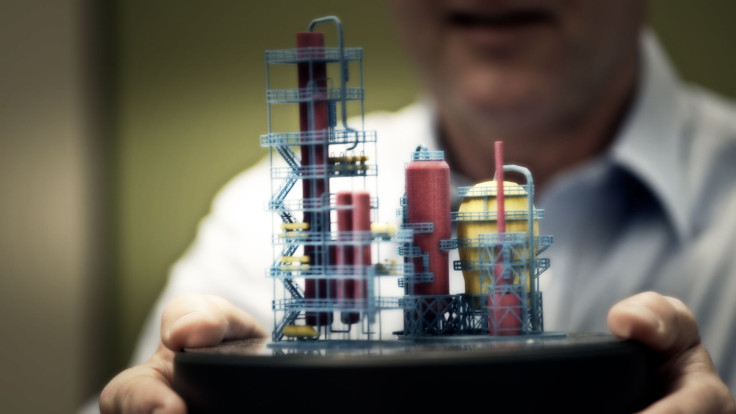HP Inc. Unveils ‘Game Changing' Multi-Jet 3D Printer And Sprout 3D Workstation

HP Inc., the PC and printer company that will be created by the division of Hewlett-Packard into two separating operating units, made an informal debut Wednesday and left little doubt that it will bet much of its future on 3D printing--a revolutionary manufacturing method that promises to transform numerous industries but is currently impractical for large-scale production. HP Inc. is bent on changing that.
At a launch event Wednesday in Chelsea, a trendy Manhattan neighborhood dominated by art galleries and cafes, execs introduced a machine that promises to bring 3D printing into mainstream use in applications ranging from industrial design to automotive manufacturing.
“When our physical and digital worlds come together, that’s when the magic happens,” said Dion Weisler, who will head up HP Inc. “You want to go from thought to expression in a second.”
With that, Weisler introduced the HP Multi-Jet Fusion, a 3D printer he said is 10 times faster than anything currently on the market. The machine has a footprint about the size of a household washer-and-dryer set, making it office friendly. It uses HP Thermal Inkjet arrays as part of a proprietary, three-axis printing process that Weisler said yields better results, at lower cost, than existing technologies. “For HP to enter this market we had to solve the core problems of speed, cost and quality,” said Weisler.
The device contains a gear assembly that it printed itself. “There’s a problem with our business model,” Weisler joked. “We’re only going to sell one because these machines can replicate themselves.” HP said its inkjet system can produce 1,000 gears in three hours, while a competitive 3D printing technology, material extrusion, would take 83 hours and laser sintering would require 38 hours.
“This could be a game-changer for commercial 3D printing as it now makes it viable for a number of industries and applications,” said Gartner analyst Pete Basiliere, who attended the event. Basiliere said parts makers and finished goods manufacturers would likely be early adopters. Gartner expects the 3D printing market to explode in the coming years, growing from 108,000 units shipped in 2014 to a predicted 2.3 million in 2018.
Other market participants include Stratasys, 3D Systems, which recently acquired a portion of Xerox’s 3D printing unit, and Hyrel.
HP Inc. could use a game changer that can justify a premium price. The company needs to show investors it can be a profitable standalone in a PC and printing market that has come to be dominated by offshore competitors like China’s Lenovo and so-called white box vendors operating in other low-cost countries. HP Enterprise, the other half of what will be the former Hewlett-Packard once the separation is complete next year, will focus on commercial IT systems and also needs to prove it can innovate in a market that is becoming commoditized as corporate computing moves to the cloud.
The Multi-Jet Fusion will enter beta testing next year and become commercially available in 2016. HP did not reveal pricing details, but execs said it will carry a price that will make it a practical option for a number of business and industrial applications.
After talking up the 3D printer, Weisler took a page from the late Steve Jobs’ “one last thing” book and introduced a PC system that combines a Windows desktop with a 3D scanner and horizontal touch display instead of a keyboard. In addition to typing, the display mat can be used to input scanned images and manipulate them for creative projects. The HP Sprout, as it’s called, “is a good thing,” said Martha Stewart, chairman of Martha Stewart Living Omnimedia, in a video that played during the launch event. The company plans to help HP create apps for the Sprout. Other partners include Crayola, Dreamworks and Rain Games.
© Copyright IBTimes 2024. All rights reserved.






















